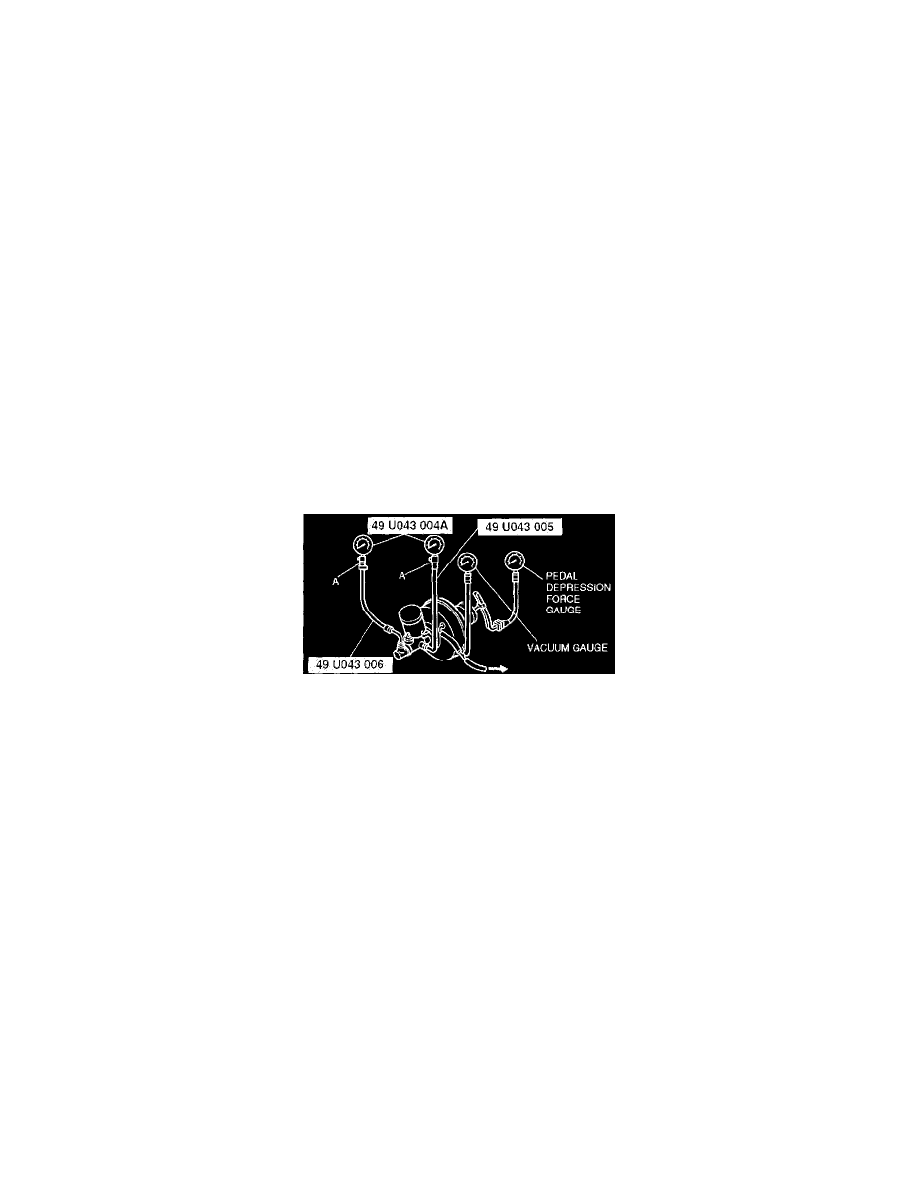MPV ES V6-2.5L DOHC (2001)

Vacuum Brake Booster: Testing and Inspection
Power Brake Unit Function Check (Simple Method)
Note: Replace power brake unit component if necessary.
Step 1
1. With the engine stopped, depress the pedal a few times.
2. With the pedal depressed, start the engine.
-
If the pedal moves down slightly, immediately after engine starts, the unit is operating.
-
If not, inspect for damage on the check valve or vacuum hose, and examine the installation. Repair if necessary, and inspect it again.
Step 2
1. Start the engine.
2. Stop the engine after it has run for 1 or 2 minutes.
3. Depress the pedal with usual force.
-
If the first pedal stroke is long and becomes shorter with subsequent strokes, the unit is operating.
-
If not, inspect for damage on the check valve or vacuum hose, and examine the installation. Repair if necessary, and inspect it again.
Step 3
1. Start the engine.
2. Depress the pedal with usual force.
3. Stop the engine with the pedal held depressed.
4. Hold the pedal down for about 30 seconds.
-
If the pedal height does not change, the unit is operating.
-
If not, inspect for damage on the check valve or vacuum hose, and examine the installation. Repair if necessary, and inspect it again.
Power Brake Unit Function Check (Inspection Using The Testers)
1. Connect the SSTs, vacuum gauge, and pedal depression force gauge as shown in the figure.
Note:
-
Use commercially available gauges and pedal depression force gauge.
-
Bleed the air from the SST at gauge A.
2. After bleeding the air from the SST, conduct the test as described in the following steps.
Checking for vacuum loss (unloaded condition)
1. Stop the engine when the vacuum gauge reading reaches 66.7 kPa (500 mmHg, 19.7 inHg). Start the engine.
2. Observe the vacuum gauge for 15 seconds.
-
If the gauge shows 63.3 - 66.7 kPa (475 - 500 mmHg, 18.7 - 19.6 inHg), the unit is operating.
-
If not, inspect for damage on the check valve or vacuum hose, and examine the installation. Repair if necessary, and inspect it again.
Checking for vacuum loss (loaded condition)
1. Start the engine.
2. Depress the brake pedal with a force of 196 N (20 kgf, 44 lbs.).
3. With the brake pedal depressed, stop the engine when the vacuum gauge reading reaches 66.7 kPa (500 mmHg, 19.7 inHg).
4. Observe the vacuum gauge for 15 seconds.
-
If the gauge shows 63.3 - 66.7 kPa (475 - 500 mmHg, 18.7 - 19.6 inHg), the unit is operating.
-
If not, inspect for damage on the check valve or vacuum hose, and examine the installation. Repair if necessary, and inspect it again.
Checking for hydraulic pressure
